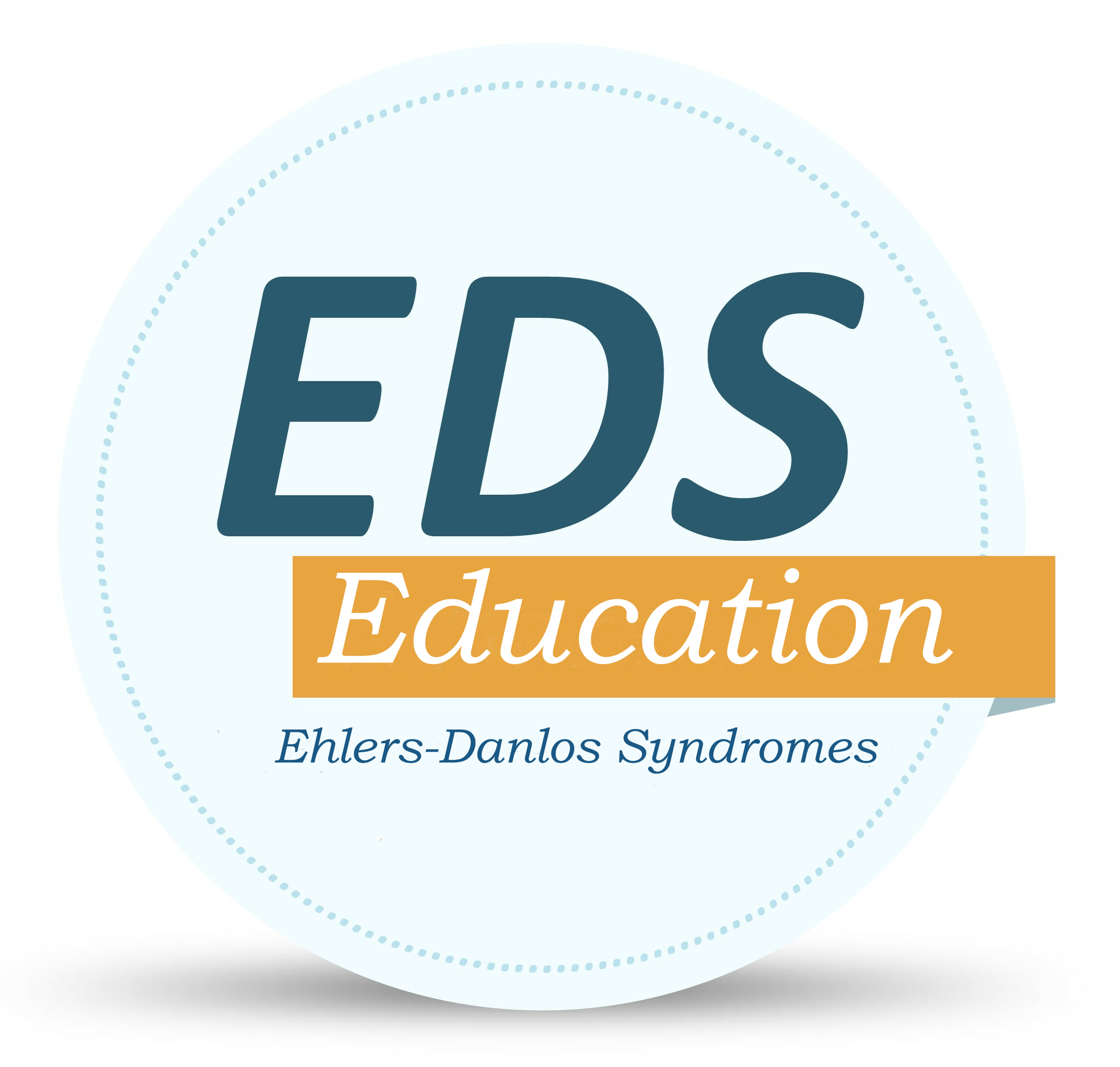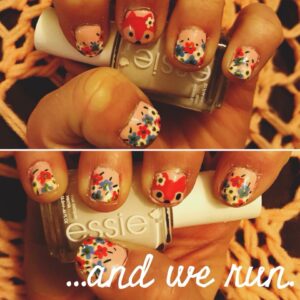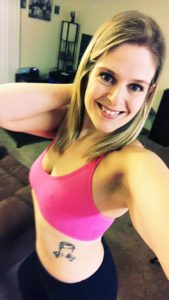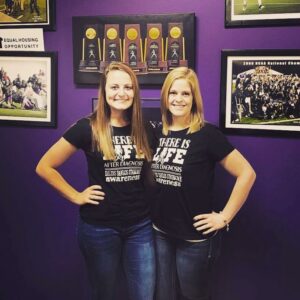Written by Tammy Kosbab, Edited by Jude Houston
This article was written for and is dedicated to everyone who has said to me, “How do you do it?”
A friend recently told me of a conversation she had with her husband shortly after her diagnosis in regard to her continued desire to work despite her pain. His reply to her, in the most loving way of course, was “You can either be in pain and not work, or be in pain and work.” If you think about this, it is so very true! Regardless of what we are doing, if a person has chronic pain, better now described as persistent pain, they will have pain no matter what they are doing. Yet the reality is it is not easy to work full time with persistent pain. I must say though due to my dedication (um, obsession!) with the work I do, I have found “where there’s a will there’s a way” is most certainly true for me. I try to maintain a positive outlook on my pain. Instead of a barrier preventing me from doing things I wish to do, my pain is an obstacle to overcome (sometimes a tremendous obstacle) which ultimately makes me stronger.
As a person who has always said things could be done when everyone else says it couldn’t be done, I will still try and envision an outcome that I realize may actually be unrealistic. This is because I believe a person MUST be able to envision a positive outcome in order for the task to be completed – I mean REALLY visualize an optimistic result, from the emotions it brings, along with the smell, taste, and everything which goes with successful completion of the task. Even if you don’t complete 100% of the task, you will still be closer to your goal of 100% than if you had never envisioned it at all. Don’t get me wrong, I have certainly had many days where I am extremely frustrated, feel defeated, wonder why I even try, and yes, I even cry at times. Sometimes those of us with persistent pain go to this dreary place. In the blog titled, When Fear of Missing Out is Reality by Stephanie Goettl from February 5, 2018 at www.edswi.org, Stephanie says, ”Acknowledge the frustration but DO NOT live there. If you pretend it doesn’t bother you, that usually makes it worse. Admitting you’re hurting over the unfairness of it is okay, but then, move on.”
My goal in this blog post is to provide helpful hints on how I am able to work full time despite pain and limitations in hopes others may utilize some of these suggestions idea. Some of the items are obvious, such as workplace ergonomics, while others are not-so-obvious suggestions many people may “know’ but don’t realize how helpful they may be! I hope I am able to help some of you with your desire to work by providing this information.
First and foremost, enjoy your job completely! I understand some of you may disagree with me for saying this and you may think enjoying a job isn’t even possible. I don’t believe YOU! There is something that each one of us enjoys and is passionate about. Once you know what that is, then ask yourself, “How could I earn an income doing what makes me happy?” If you’re not qualified to earn income in that particular role, maybe you could enroll a few classes to further your education. If taking classes has been difficult in the past, maybe the suggestions below may provide some direction to help you. The reason this is my number one idea is because if you’re fully engaged in your job, or anything really, this active engagement is a distraction to the pain. Find work you enjoy doing so much that you become so consumed that you’re mind has no room for pain. To be perfectly honest, this is one of the biggest reasons that I work as much as I do!
Have a GREAT boss. If you have any doubts of good rapport with a supervisor when you’re interviewing for a position, avoid taking this new position. Oftentimes it isn’t so much the job itself that causes struggling as this occurs much more often when you have an overbearing, micromanaging, or rigid boss. It most definitely makes simple things, like frequent position changes, flexible hours, or requests for accommodations much more challenging. There is not a job out there that should cause increased pain. The job market in the region I live is competitive enough to accommodate our next generation of workers. The next generation of workers have learned flexibility while they attended school, unlike my generation where we sat at one desk for nearly the entire day and there were little to no options for “flexibility.” This new generation of employees knows how important it is to engage in movement and mindfulness throughout daily living in order to be healthy and more productive. I am very blessed as my boss is amazing. She allows me to have flexible hours as long as I complete my work on time, which is an absolute necessity when a person has frequent doctor appointments for themselves as well as for his or her children who also have chronic conditions and are home from school more frequently than other children.
Supportive family, friends, and coworkers. I have a wonderful network of family, friends and coworkers. I believe they are supportive of me because they know I do my best every day. They are supportive because they know that I do what I am able, when I am able, and that I am motivated to do everything I can on a daily basis to feel well because I am driven by the need to help others as I do in my career. Family and friends also know that I value my integrity and always try to do the right thing. My lack of a mouth barrier may sometimes make me look like the bad guy, such as when I tactfully – or not-so-tactfully – tell someone they need to put on deodorant. At the same time, people know they never have to wonder what I am thinking. People are aware if I have something to say, I will say it and I feel like people actually really appreciate that I can be trusted to tell them the truth, even if it isn’t what they want to hear.
Affirmations book. Almost every day prior to work, I typically start my day reading something which inspires me the rest of my day. A favorite book of mine is called The Language of Letting Go by Melody Beattie. This meditation book is organized by date so each date has an inspirational message. I prefer to simply use my intuition and open to whichever page I feel guided to TRUSTING I will open to the page holding the message I need to hear this particular day. This is one reason I ended up writing this blog today. I just happened to open to June 19th and the title was Making Life Easier. The overall message is that life does not have to be hard! The author states, “Our value and worth are not determined by how hard we struggle.” Throughout this helpful book, the author explains the need to let go of the belief that life has to be hard, to let things flow and trust that they will work out. Trust, Acceptance, and Faith!
Medication. For those who have medical conditions, it is important to not miss the medications that are necessary and helpful to manage their conditions. For me, I set timers for reminders to take my medication throughout my workday. Most times I am so engaged in my work I would otherwise forget to take it and when this occurs, I suffer a big crash and then I am not able to work productively. For those who have Ehlers Danlos Syndromes (EDS), oftentimes they have “allergies” go along with it. Newer research is finding that these allergies are caused by non-specific allergens due to overactive mast cells releasing histamines and other mediators throughout the day as a sort of hyper-response. Is it a coincidence that many of us get tired after eating? Is it a coincidence that we experience weakness and fatigue when we get hot? Mast cells can be triggered by just about anything, similar to a full bag of oranges where the oranges are about the same size as the holes in the mesh bag – any little movement would trigger the oranges, as compared to histamines in the mast cells, to fall out! This overactive mast cell condition is called Mast Cell Activation Disorder (MCAD), and newer research is finding that treating these overactive mast cells with mast cell stabilizers like Gastrocrom, as well as taking antihistamines that target BOTH the H1 and H2 receptors on a regular basis has helped many with pain, brain fog, migraines, IBS, and other common symptoms that persons with EDS experience! For more information, please see the other resources about MCAD at www.edswi.org. On a different note, I try not to switch medications often. I take the least amount I need to take for my condition(s) but I take them as regularly as I can. The reason that I feel this is so important is because many people with EDS have medication metabolism issues and oftentimes one medication may make a different one work better or worse. This is called a drug-drug interaction. Therefore, regularity is very important to remain stable.
Hand sanitizer and antimicrobial wipes. We must stay healthy and not get sick. If you are in a workplace outside of your home, I thoroughly recommend these products to avoid illness but if you dislike these products, that’s fine. I know they can be controversial but so far they have helped me even within my home workplace.
Workplace ergonomics:
Standing Desk. I appreciate my standing desk tremendously because it offers options. It allows me ability to work while standing as well as when sitting. I also have the option of how high or low I prefer the desk to be. If I need to rest one foot on my chair while I am working, I am able to move the desk to a different height. Also, when I am standing and waiting for a page to load, I have an ability to do some squats and/or exercises for strength or to get the blood moving. I may also do a little bit of stretching. Be careful if you’re doing these things though because I have found that too frequent stretching causes additional increased pain for me later on in the day or evening.
Monitor riser. The riser provides options about how high the monitor is so I am able to decide which position is best for my neck. At this time, I am using a board game as the riser for my laptop, which is on top of the standing desk. You could also use a book or two to lift your monitor to the appropriate height. Typically, your monitor should be a full arm length away from your body (18-20”) and the top of the screen is at or below eye level so the user can read it without bending their head or neck down/back. If multiple monitors are used, the position of the primary monitor is directly in front of the user and the other monitors are directly beside it. If time is split evenly between monitors, they are next to each other within a comfortable viewing angle with minimal head movement. A laptop is typically impossible to utilize ergonomically as your eye level is not at the top of the screen unless one operates a wireless keyboard and the laptop is lifted to the appropriate height.
Wireless, ergonomic keyboard. I have a Logitech K350 2.4Ghz Wireless Keyboard. This wireless ergonomic keyboard allows me to place the keyboard anywhere I need to so my hands, wrists, and neck are in a neutral straight alignment with my elbows flexed to 90 degrees and held close to my body. It is imperative everyone avoids straining joints or causing overuse injuries which could lead to tendonitis or other additional problems.
Mice. It is important to have a good mouse and to also have another mouse available for use as a backup when the good mouse becomes too repetitive and causes increased pain. I have the Logitech M570 Mouse. It has a tracking ball which I can navigate the screen by using my thumb. There are days though the rolling ball hurts my thumb, and then on those days I will secure tape to my thumb to avoid additional pain. It appears very helpful for me to have the option of using a regular mouse or this one with the rolling ball. The mouse or track ball should be located right next to the keyboard so it can be operated without reaching. Frequent position changes are not only important but necessary when dealing with EDS and/or persistent pain.
Foot stool. I keep a foot stool under my desk so I am able to shift positions more often. I could place both feet on it if I am sitting and when standing, I can put one foot on it and if I wanted to, I could even sit on it if I needed to. The point is, the foot stool provides options which allow me greater ability to continue working.
Proper lighting. Avoid glare from windows and lights. LED and fluorescent lights appear to bother my eyes causing headaches. I have two small lamps on my desk with 40 and 60 watt incandescent bulbs. This provides me the option of adjusting the lights in my space to avoid headaches. I also have a few big windows in my home office and the window treatments allow me to have as much or as little natural light in my space as I want.
Talk to text software. On my computer I have Dragon Software which allows me ability to quickly and easily type up long documents without the strain on my hands from typing as Dragon will type what I speak into the computer microphone. Luckily, I was able to get this software at a reduced price through my college. Other times when I need to write up a long document, I will use my email or Notes app on my iPhone and use the talk-to-text feature on there and then email the text to myself. For further workplace ergonomic information: https://www.osha.gov/SLTC/etools/computerworkstations/checklist_evaluation.html
Personal Bracing Assists:
Clavicle Brace. The clavicle brace is a soft white brace prescribed by my physical therapist years ago which gently holds my shoulders back. While it appears to look like a vest, there is no material in the front. Therapists typically call this is a “Figure 8 Clavicle Brace.” This brace allows my upper extremity and upper back muscles the option to rest and relax while I am working. I don’t use this brace or any of my braces every day, but my braces provide OPTIONS for relief which I feel are absolutely necessary if you have neck, back or shoulder pain and work at a computer.
Neck Brace. This gives my neck muscles a rest on some days but again, while I don’t use it very often, some days I must and I have the option of wearing it for relief. Tape, ring splints, Gold’s Gym glove. I have many, many rolls of different kinds of body tape: white sports tape, Kinesio tape, and waterproof, spongy skin-colored sports tape. I use it to tape up the joints of my fingers and my thumb as I use my hands to type all day and it appears to help me reduce additional pain. Many people use Kinesio tape on their back to help remind them to maintain a good posture. Other people such as myself, use it to stimulate the sensory nerves on the skin which essentially “takes away” or distracts the nerves from sensing pain. It is not 100% fool proof but anything which could distract heightened pain nerves is a positive in my book!
Personal uplifting workplace sensory assists:
Essential Oils. For Christmas, my daughter Kailee presented me with a desktop essential oil diffuser. Some days I need to be reminded to breathe and the diffuser stimulates the senses and is a nice distraction to the ho-hum of daily activities. In fact, research indicates if we participate in deep breathing (6 repetitions, 6 times per day), this will encourage greater oxygen to our oxygen depleted nerves to promote decreased nerve pain. You could set reminders for this too throughout your day. With my newly acquired diffuser, I am reminded how the sense of smell is so very powerful. For example, like many others, I STILL recall the smell of my Grandmother’s house from back when I was a child. At the time I was about 5 years old, I really did not like the smell of her home at all. Yet now as my grandmother is no longer with us on Earth, when I get a whiff of this very same air freshener I previously disliked, I immediately have positive emotions and memories about being at her house and eating bacon, eggs, and biscuits and gravy at her 1970’s style dark brown wood kitchen table. I am also reminded of her little orange sports car, and the time my mom and I were brushing our teeth at Grandma’s bathroom sink and I remember how my mom was watching me in the mirror and when I spit the toothpaste into the sink, mom spit onto the floor. We laughed and laughed and laughed and even now it makes me happy and brings me positive feelings. Our sense of smell is strong enough to cause these positive associations made in an instant – with zero effort or control – from a single whiff of a particular scent. In fact, the sense of smell is very strongly correlated to feelings and emotions. Therefore, if you have a scent that has positive associations for you, it can actually help you a little with pain by triggering “feel good” hormones and memory associations. I also believe we should be careful utilizing fragrances or essential oils at times of high pain or a bad day because we may risk creating a negative association with the scent.
Music. Another pain diversion is music which I like to include during my workday. I find music is not only quite relaxing, it most definitely provides further distraction from the pain through the auditory sense of hearing!
Photos. Our sense of sight provides additional distraction and helps us to focus on the positive. On the side of my desk I have photos of family members, friends, and persons with EDS who have passed. This collections of photos are here as motivation to keep going and reminding me of my life’s purpose – which is to help others who are also suffering so they may find answers and solutions to live their life to the fullest despite pain and limitations.
Tokens. Within my eyesight at my desk, I also have notes from friends and other little uplifting items which automatically recreate positive feelings. Again, this helps reproduce positive emotions and associations throughout the day with merely a brief view of the tokens. My favorite item is a yellow coffee cup I painted with my kids at a local painting/craft shop about five years ago. I remember the day well! I went with my children and what fun we had just hanging out, talking, laughing while we were painting. As my late mother LOVED the color yellow because it reminded her of sunshine and smiley faces, I just had to choose yellow. I also painted my children’s names on the cup because…well, they are my world!
Incorporate building strength and endurance because… why not?
Under Desk Treadmill. Recently, I purchased a treadmill that goes under my desk and I LOVE it. It is the BEST $425 I have ever spent in my entire life and this included shipping and delivery straight to my house! (Unfortunately, it looks like the price has gone up to $459 now but it is worth every penny.) I have walked anywhere from two to four miles every day since it was set up in my workplace at home. The circulation and other health benefits are endless. Even if a person could only walk 1/4 of a mile, this is better than no walking at all. I do realize while this is not an option for everybody such as those who have difficulty walking, those who are able to my find it is a wonderful tool.
Ankle weights. At times, I wear ankle weights on my wrists when I am feeling stronger because hey, it can’t hurt to build some more muscle! Please be aware, this is for a limited time though because I too need to avoid overuse injuries. 3 -5- 10 pound dumbbells. The dumbbells are helpful to have at my desk so if I need a break and am having a good day with increased strength, I am then able to do a few bicep, tricep, or deltoid exercises. Again, we must avoid overuse injuries though so please listen to your body.

Here is a photo of my at home workstation. I work here up to 70 hours per week between my two jobs. I hope that these tips and hints are even slightly beneficial to you. In the comment section, please tell me what other tips and tricks you have that allow you to work or attend school on a regular basis.










 Dr. Neilson – Introduction to EDS
Dr. Neilson – Introduction to EDS Dr. Tinkle – Classification
Dr. Tinkle – Classification Dr. Chopra – Pain Management
Dr. Chopra – Pain Management Dr. Marcus – Muscle Pain Treatment
Dr. Marcus – Muscle Pain Treatment Dr. Mitakides – TMJ and CCI (Cervicocranial Instability)
Dr. Mitakides – TMJ and CCI (Cervicocranial Instability)
 EDS Wisconsin’s Mission is to provide support and resources to Wisconsin’s patients and Medical Professionals about Ehlers-Danlos Syndromes and related conditions via education and research. Fulfilling our Mission, we have two very exciting, and important, events coming to Wisconsin very soon! However, for these events to be a success, we need to reach more people; and that is where your help is critical.
EDS Wisconsin’s Mission is to provide support and resources to Wisconsin’s patients and Medical Professionals about Ehlers-Danlos Syndromes and related conditions via education and research. Fulfilling our Mission, we have two very exciting, and important, events coming to Wisconsin very soon! However, for these events to be a success, we need to reach more people; and that is where your help is critical.  We are asking for help from anyone able, to please print and distribute the following flyers freely; there are still many people beyond our reach in need of this information. Thank you, in advance, for helping us fulfill our Mission, but also for serving your local community. For, if we can reach just one more person, together, we could save a life.
We are asking for help from anyone able, to please print and distribute the following flyers freely; there are still many people beyond our reach in need of this information. Thank you, in advance, for helping us fulfill our Mission, but also for serving your local community. For, if we can reach just one more person, together, we could save a life.




